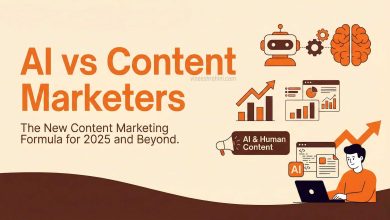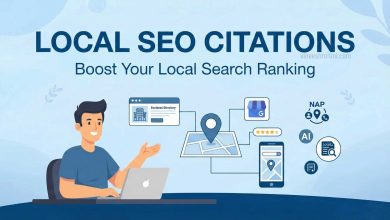Evolution of Marketing – Traditional to Digital
Introduction
Marketing is a concept that has been around for centuries. From the time when the first merchants began selling goods to the modern digital age, marketing has evolved significantly. With the advent of the internet and digital technologies, traditional marketing methods have become obsolete, and new marketing strategies have emerged. This essay will explore the revolution of marketing from traditional to digital and how it has changed the business landscape.
Traditional Marketing
Traditional marketing refers to marketing methods that were commonly used before the advent of the internet and digital technologies. These methods include print advertising, direct mail, television and radio ads, billboards, and telemarketing. Traditional marketing is generally expensive and has a limited reach, making it difficult for small businesses to compete with larger companies.
Also Read…. Marketing Has Not Changed, But Medium Has Changed
- Print Advertising
Print advertising was one of the most common forms of traditional marketing. Advertisements were placed in newspapers, magazines, and other publications to reach a wide audience. The cost of print advertising was high, making it difficult for small businesses to afford.
- Direct Mail
Direct mail involved sending promotional materials to potential customers through the mail. This method was popular in the 1980s and 1990s but has become less effective in recent years due to the high cost and low response rates.
- Television and Radio Ads
Television and radio ads were a popular form of advertising in the 20th century. These ads reached a large audience, but they were expensive and had a limited lifespan.
- Billboards
Billboards were used to promote products and services along highways and in urban areas. They were expensive to produce and had a limited reach.
Also Read…. Exploring the Incredible Capabilities of ChatGPT 4
- Telemarketing
Telemarketing involved calling potential customers on the phone to promote products and services. This method was popular in the 1980s and 1990s, but it became less effective as people became more resistant to cold calls.
Digital Marketing
Digital marketing refers to marketing methods that use digital technologies to promote products and services. This includes methods such as email marketing, social media marketing, search engine optimization (SEO), and pay-per-click advertising (PPC). Digital marketing is more cost-effective than traditional marketing and can reach a larger audience.
- Email Marketing
Email marketing involves sending promotional materials to potential customers through email. This method is cost-effective and has a high return on investment (ROI). Email marketing can be used to build relationships with customers and keep them engaged with a brand.
- Social Media Marketing
Social media marketing involves using social media platforms to promote products and services. This method is effective because it allows businesses to connect with customers in real-time. Social media marketing can also be used to build brand awareness and increase customer engagement.
Also Read…. 7 SEO Tips – These SEO Tips Always Help For You
- Search Engine Optimization (SEO)
SEO involves optimizing a website to rank higher in search engine results pages (SERPs). This method is important because most people use search engines to find information about products and services. Businesses that rank higher in SERPs are more likely to attract customers.
- Pay-per-click Advertising (PPC)
PPC involves placing ads on search engines and social media platforms. Advertisers only pay when a user clicks on their ad. This method is cost-effective because businesses only pay for results.
The Advantages of Digital Marketing
Digital marketing has many advantages over traditional marketing.
First, digital marketing is more cost-effective than traditional marketing. This is because digital marketing methods can reach a larger audience at a lower cost. For example, email marketing is cheaper than print advertising, and social media marketing is cheaper than television advertising.
Second, digital marketing can reach a larger audience than traditional marketing. This is because digital marketing methods can be used to target specific demographics. For example, Facebook ads can be targeted to people based on their age, gender, location, interests, and more.
Also Read…. The Role of Marketing Channels in Digital Marketing
Third, digital marketing allows businesses to track their results in real-time. This is because digital marketing methods provide data and analytics that can be used to measure the effectiveness of a campaign. This information can be used to make data-driven decisions and optimize marketing strategies.
Fourth, digital marketing allows businesses to engage with customers in real-time. This is because social media platforms and email marketing allow for immediate communication between businesses and customers. This can help businesses build relationships with customers and improve customer satisfaction.
Finally, digital marketing allows businesses to be more creative and innovative in their marketing strategies. This is because digital marketing methods provide a wide range of tools and platforms that can be used to create unique and engaging content.
The Impact of Digital Marketing on Business
The revolution of marketing from traditional to digital has had a significant impact on businesses of all sizes. Digital marketing has allowed small businesses to compete with larger companies by providing cost-effective marketing solutions. It has also made it easier for businesses to reach a larger audience and expand their customer base.
In addition, digital marketing has changed the way businesses interact with customers. Social media platforms and email marketing have made it easier for businesses to communicate with customers in real-time and build relationships with them. This has improved customer satisfaction and loyalty.
Digital marketing has also provided businesses with valuable data and analytics that can be used to optimize marketing strategies. This information can be used to make data-driven decisions and improve the effectiveness of marketing campaigns.
Also Read…. Best Digital Marketing Certifications
However, the revolution of marketing from traditional to digital has also created new challenges for businesses. The constantly evolving digital landscape requires businesses to stay up-to-date with the latest trends and technologies in order to remain competitive. This can be difficult for businesses that do not have the resources to invest in digital marketing.
A Simple Root of Evolution of Marketing
Traditional Marketing Methods
↓
Rise of Technology
↓
Emergence of Digital Marketing Methods
↓
Social Media
↓
Search Engines
↓
Big Data and Analytics
↓
Real-time Communication
↓
Creative and Innovative Marketing Strategies
Also Read…. Audio Marketing vs Video Marketing
Conclusion
The evolution of marketing from traditional to digital has had a significant impact on businesses of all sizes. Digital marketing has provided cost-effective marketing solutions, allowed businesses to reach a larger audience, and improved customer satisfaction and loyalty. However, the constantly evolving digital landscape has also created new challenges for businesses. In order to remain competitive, businesses must stay up-to-date with the latest trends and technologies in digital marketing. Overall, the evolution of marketing from traditional to digital has transformed the business landscape and will continue to do so in the future.



